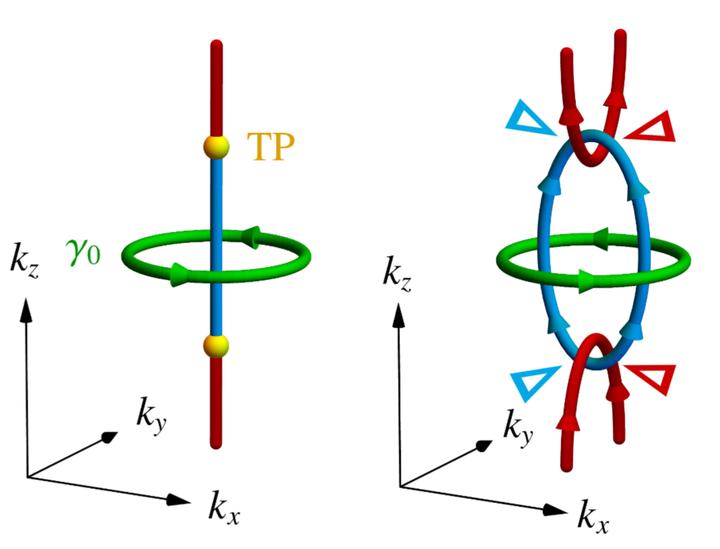
Abstract
We study a class of topological materials which in their momentum-space band structure exhibit threefold degeneracies known as triple points. Focusing specifically on $\mathcal{PT}$-symmetric crystalline solids with negligible spin-orbit coupling, we find that such triple points can be stabilized by little groups containing a three-, four-, or sixfold rotation axis, and we develop a classification of all possible triple points as type A vs type B according to the absence vs presence of attached nodal-line arcs. Furthermore, by employing the recently discovered non-Abelian band topology, we argue that a rotation-symmetry-breaking strain transforms type-A triple points into multiband nodal links. Although multiband nodal-line compositions were previously theoretically conceived and related to topological monopole charges, a practical condensed-matter platform for their manipulation and inspection has hitherto been missing. By reviewing the known triple-point materials with weak spin-orbit coupling and by performing first-principles calculations to predict new ones, we identify suitable candidates for the realization of multiband nodal links in applied strain. In particular, we report that an ideal compound to study this phenomenon is $\ce{Li2NaN}$, in which the conversion of triple points to multiband nodal links facilitates a largely tunable density of states and optical conductivity with doping and strain, respectively.